The Camillian HIV/AIDS Global Ministry
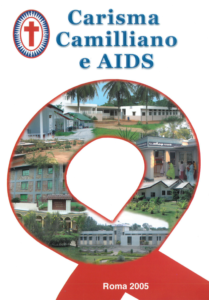 The world is beset by another pandemic called the coronavirus (COVID19), which caused the global death of 1.4 million people (as of 1/12/20). From the period of the plagues in the late Middle Ages to the HIV/AIDS, Ebola in West Africa, and the COVID19, men wearing red crosses on their breasts are making a world crusade celebrating these “festivals of charity.” These events gave birth to the new school of charity of St. Camillus, who offered the martyrs of charity animated by the Camillian charism and spirituality of service.
The world is beset by another pandemic called the coronavirus (COVID19), which caused the global death of 1.4 million people (as of 1/12/20). From the period of the plagues in the late Middle Ages to the HIV/AIDS, Ebola in West Africa, and the COVID19, men wearing red crosses on their breasts are making a world crusade celebrating these “festivals of charity.” These events gave birth to the new school of charity of St. Camillus, who offered the martyrs of charity animated by the Camillian charism and spirituality of service.
“I have only touched upon a few things about those fathers or brothers who in some contagions or other worthy actions died for the health of their neighbors. So that from them, our other religious who will come will hold them as examples of virtue so that they will not have anything to forgive in the flesh or the blood when it falls to them to be used in similar circumstances. Seeing that our ancient religious did not take delight in fine words or (as the Apostle says) or beat the air with sticks, but, rather, mortified themselves to the point of losing their lives for the health of their souls. In such contagions, having lost their present and momentary lives, who doubts that they did not win eternal and celestial life?” (Sanzio Cicatelli)
The words of Father Sanzio Cicatelli, the biographer and companion of St. Camillus de Lellis, remains a living testimony to the gift of the Holy Spirit to the Church and the authenticity of its bearers in serving the sick even in danger to their own lives (Fourth Vow). This inspiration remains vibrant in the hearts, heads (mind), and hands of the Camillians today, particularly in their engagement with persons living with HIV/AIDS.
The genesis and context
In the last quarter of the 20th century, HIV/AIDS became a pandemic with mounting cases across several African, European countries, in Asia, in Oceania, and the USA. In May 1983, two doctors at the Pasteur Institute in France, Luc Montagnier, and Françoise Barré-Sinoussi, reported a new retrovirus called Lymphadenopathy-Associated Virus (or LAV) that could be the cause of AIDS – the virus later known as HIV. The following year, Project SIDA (1984-1997) rolled out that AIDS could be acquired sexually, through blood transfusions, and – importantly – that it could affect anyone. With this discovery, panic has been lessened, and community-based interventions have started apart from the clinical intervention. These community-based initiatives range from developing the local response to AIDS – from educating the community about transmission, setting up helplines, and, later, advocating for better responses and treatment. The Visual AIDS Artists Caucus launched the Red Ribbon Project to create a symbol of compassion and support for people living with HIV and their carers. The color red is chosen for its connection to blood and the idea of passion — both anger and love.
Challenged by the HIV/AIDS pandemic while keeping the fire of its prophetic mission, the Camillians began to engage in the HIV/AIDS ministry in various forms of programs and activities. In 1988, the Tenda di Cristo of Cremona started to receive persons living with HIV/AIDS (PLWHA) who have been abandoned by their families because of stigma and prejudice. In 1993, the Tenda di San Camillo of Acireale was set up. These “Tenda” (tents) were primarily designed to offer a home for the marginalized and abandoned PLWHA regardless of creed, color, and culture.
A more robust and dynamic Camillian response to the HIV/AIDS pandemic began in Asia and Africa. Father Frank Monks, the former Superior General of the Camillians, believed that HIV/AIDS is not just a healthcare issue but rather a humanitarian one. It cannot be left solely into the hands of medical science; a Christian input is a must, especially that those most at risk and who bear the heaviest burden are the poor. Nelson Mandela describes it as a “genocide: the orphans, the inaudible struggle because of the stigma attached to it, the brunt being borne by the women, infected, and their children in utero.” In this situation, the most infectious is not the virus but the stigma. Thus it requires “a collaborative planning which takes cognizance to many different factors: the signs of the times as we must be aware of what is happening among the people and society; professional competency as we need intelligent charity where accountability is a fundamental requisite; and theological literacy providing us with the knowledge of the theology of religious life and the lay vocation.” (Frank Monks).
A developed and structured intervention
The 1990s was the peak of the Camillian response to the global pandemic of HIV/AIDS. In 1993, the Camillians of Thailand opened the “Soon Bantaojai” (Consolation Centre), now the Camillian Social Center of Rayong (CSC). It engaged in the work on palliative care, prevention training for working population, students and community members, center for infected children’s orphans, and network of people living with HIV/AIDS. It works closely with local and national state agencies, health personnel, the business sector, local communities, schools, NGOs, civil society, and faith‑based organizations to address HIV/AIDS situations. Its vision is to bring hope to life with quality and respect to the human dignity of PLWHA by raising awareness of the society to the disease, initiating a multi-stakeholder prevention approach, building networks of stakeholders, and developing a center of learning for vulnerable groups and people working with PLWHA.
In 1995, the Camillians in Peru opened the “Hogar San Camilo” (HSC), whose main objective is to promote integral health. The value of life for individuals and families affected by HIV/AIDS living in extreme poverty is of paramount importance. Its primary target of intervention is the family affected by the disease. In 1997, the Sneha Trust of the Camillians in India started its first health care initiative addressing the issue of care of PLWHA. It runs four centers and coordinates care, support, and treatment activities in the State of Karnataka. Moreover, it developed a comprehensive care program helping children and adults to grow and build their future with love, care, and compassion.
Mr. Raj (not his real name) shared his joy of finding a place where he experiences personal care and support. He was a former police constable infected with HIV/AIDS and an alcoholic. “I could learn from this center the importance of discipline in my life. Now I assure you that I will lead an orderly life and tell all those who come in contact with me that they need to take care of their lives in a responsible way.” It took him such misfortune (HIV/AIDS) to finally live a normal life in the society with meaning.
Dr. Ravi Vaswani, a physician volunteer to Snehasadan center, affirmed: “It has been doling out pure love and unadulterated compassion, in more doses than any other health care institution that I have had the good fortune to experience. It weaves its magic through the universal and eternal language of loving care, which flows from their hearts and hands, unbidden, by some greater unseen spiritual force. Orphaned children find in Snehasadan the last bastion of hope, where they rekindle their faith in a benevolent and loving God. Irrespective of caste, creed, or religion, Snehasadan embraces anyone who needs the milk of human kindness and once accepted in the family, all are given equal and unrequited, tender affection. Though the team at Snehasadan feels I have given great service to them, the truth of the matter is that I have received far more than I have given. Every time I experience first hand the loving and compassionate care here at Snehasadan, I gain the opportunity to rid myself of all the accumulated cynicism and skepticism. Every time I depart from Snehasadan, I leave a rejuvenated soul, ready to face the vicissitudes that life is bound to throw at me. Snehasadan gives me the hope to continue my efforts, knowing that all is not lost for the future of humanity.”
In 1998, the Camillian Delegation of Kenya became engaged with the HIV/AIDS ministry. St. Camillus Dala Kiye Children Welfare Home supports orphaned and vulnerable children (OVC) who have been victims of HIV/AIDS. It provides care and support to OVC in food and nutrition, health, education, shelter and care, child protection, psychosocial support, and life skills. It also rolls out an economic empowerment program to the OVC caregivers by providing entrepreneurship and agricultural training and assisting them to come up with income-generating activities of their choice.
In 2006, the Camillian Province of Burkina Faso inaugurated the Center for Biomolecular Research Pietro Annigoni (CERBA). It is a unique modern technical platform for basic and clinical research on HIV/AIDS, hepatitis B, and C and genetic diseases such as sickle cell disease of the Camillians in their commitment to fighting the HIV/AIDS virus. It gives opportunities to young practitioners and researchers in the African region. This institution has strong links with known medical universities in the world.
In 2010, the Camillians in the Philippines mobilized a non-judgmental and compassionate education-focused and service-oriented response to the pandemic’s challenges. It disseminates information and educational opportunities on HIV/AIDS, promotes solidarity in support of HIV/AIDS programs of other Catholic structures in the Philippines, and advocates for a just response to the pandemic. They believed that education continues to be the most effective “vaccine” to combat denial, ignorance, and prejudice, which places people at risk of contracting HIV/AIDS.
Lessons learned
A multi-stakeholder, multidisciplinary, integrated, and comprehensive care approach to persons living with HIV/AIDS is the significant contribution of the Camillians in the fight against this pandemic globally. It is a fruit of decades of service and engagement in this particular disease. Today, we have a better understanding of how the virus functions and how to test, treat and prevent HIV infection. We have clear evidence on the biomedical, social, and structural drivers of new HIV infections and deaths and new tools to halt them. Moreover, the Camillian engagement in this field has humanized the entire approach by helping survivors find meaning in their suffering and making the local communities exercise accountability and responsibility.
The development of centers for training, education, and research is the contemporary expression of the new school of charity of St. Camillus. It offers residential and hands-on training to health and pastoral care providers to gain skills and knowledge of handling the situation of PLWHA. It allows aspiring practitioners and researchers in developing countries to advance their scientific preparation to combat this pandemic. To the ordinary populace overcome by fear and stigma, these centers became eye-opener and space for deeper involvement in this ministry. It has influenced the national policies of some countries through its innovation, research, and vision of integral and compassionate care to PLWHA, which developed into strategies of prevention and care initiatives. Yet, the translation of science into law and policy remains a drag on the AIDS response. Despite rapid scientific advances, the world will not achieve the 2020 global HIV goals, as reported in the UNAIDS 2020 Evidence Review.
Partnership building and collaborative ministry is also another important milestone of the Camillian HIV/AIDS ministry. First, it is acquired through working at the grassroots (local community level) to acquire the skills to transmit urgent, complete, and value-based information regarding the disease and prevention. Then it works toward the elimination of fear, stigma, and discrimination toward those living with HIV/AIDS and advocates for universal access to appropriate HIV prevention, care, treatment, and support. Following the Church’s concern for the physical and spiritual health and well being of individuals and communities, she strives to declare and safeguard the values that promote and protect these persons and groups. Through her teaching, the Church seeks to uphold and defend integrity, fidelity, and responsibility in relationships and to accompany people and help correctly form their consciences as they seek to discern God’s will in the day to day demands of life in a community.
Advocacy work is another essential and innovative aspect of this ministry. The fight for universal access to ART has been at the top of its agenda. This advocacy was met with a serious challenge when the trade-related aspects on health intellectual property rights (TRIPS) agreement require World Trade Organization (WTO) member countries to have strong intellectual property rights protection in their national laws – including patent protection for pharmaceuticals. Prior to TRIPS, developing countries could produce or acquire generic versions of high-cost drugs at more competitive prices. TRIPS makes this more difficult. The signing of the agreement galvanizes treatment access campaigns against Big Pharma. This advocacy work is driving success in most of the developing countries.
The Camillian HIV/AIDS ministry is evolving from its assistential character to more comprehensive care and support, from the accompaniment approach to advocacy work, from an independent venture to partnership and collaborative method, and from learning by engaging to a scientific endeavor animated by intelligent charity or to what the Camillians called competent compassion. Over the years, this particular type of ministry has grown a lot and shared so much with the Church. For us Camillians, this is being made possible because of our commitment to the Fourth Vow – service to the sick even in danger to our own lives.
Aris Miranda, MI
1/12/2020 – World Aids Day



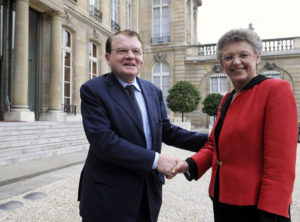


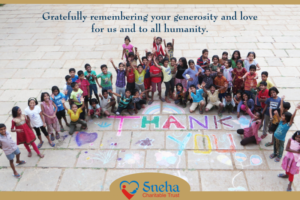
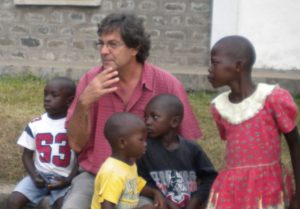
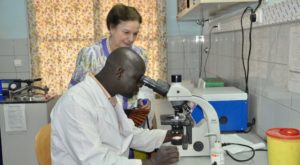











Camillians on Facebook
Camillians on Twitter
Camillians on Instagram